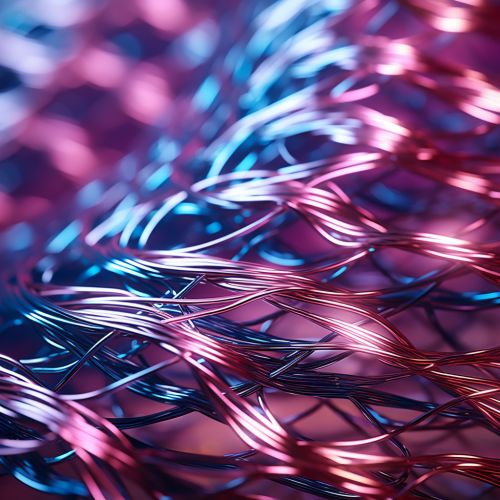Topological insulator
Introduction
A topological insulator is a material that behaves as an insulator in its interior but whose surface contains conductive states, meaning that electrons can only move along the surface of the material. This unique property arises from the material's electronic structure, specifically its band structure, which is related to the quantum mechanical properties of the electrons within the material.


Quantum Mechanics and Band Structure
The behavior of a topological insulator is deeply rooted in quantum mechanics, the branch of physics that describes the smallest particles in the universe, such as electrons. In a topological insulator, the quantum mechanical properties of the electrons allow them to move in ways that are not possible in other materials.
The key to understanding this behavior lies in the band structure of the material. The band structure describes the energy levels that an electron in the material can occupy. In a typical insulator, there is a large gap between the energy levels that are occupied by electrons (the valence band) and the energy levels that are unoccupied (the conduction band). This gap prevents electrons from moving freely within the material, making it an insulator.
In a topological insulator, however, the situation is different. While the interior of the material still has a large band gap, the surface of the material has a special type of band structure called a surface state. In these surface states, the conduction and valence bands intersect, allowing electrons to move freely along the surface.
Topological Order and Symmetry
The surface states in a topological insulator are a result of a property called topological order. Topological order is a type of order in the quantum mechanical phase of matter that arises from global or topological properties of the system, rather than local properties.
In a topological insulator, the topological order is related to the symmetry of the material. Specifically, it is related to time-reversal symmetry, which is the symmetry of physical laws under a reversal of the direction of time. In a topological insulator, time-reversal symmetry leads to the existence of surface states where the conduction and valence bands intersect.
Experimental Observations
Topological insulators were first predicted theoretically in the early 2000s and were subsequently observed experimentally in several materials. These materials include mercury telluride (HgTe), bismuth antimonide (BiSb), and bismuth selenide (Bi2Se3), among others.
In these materials, the existence of surface states has been confirmed by a variety of experimental techniques, including angle-resolved photoemission spectroscopy (ARPES), which measures the energy and momentum of electrons ejected from a material when it is illuminated by light.
Applications and Future Directions
The unique properties of topological insulators make them promising materials for a variety of applications. In particular, their surface states could be used to create new types of electronic devices that exploit the quantum mechanical properties of electrons.
One potential application is in spintronics, a field that aims to use the spin of electrons (a quantum mechanical property) to store and manipulate information. Because the motion of electrons in the surface states of a topological insulator is tied to their spin, these materials could be used to create devices that control spin in novel ways.
Another potential application is in quantum computing. The surface states of a topological insulator are robust against local perturbations, which could make them useful for creating qubits, the basic units of information in a quantum computer.
Despite the promise of these applications, much work remains to be done. In particular, it is still a challenge to create topological insulators with the desired properties, and to manipulate the surface states in a controlled way. Future research in this area is likely to focus on these challenges, as well as on exploring the fundamental physics of these fascinating materials.
